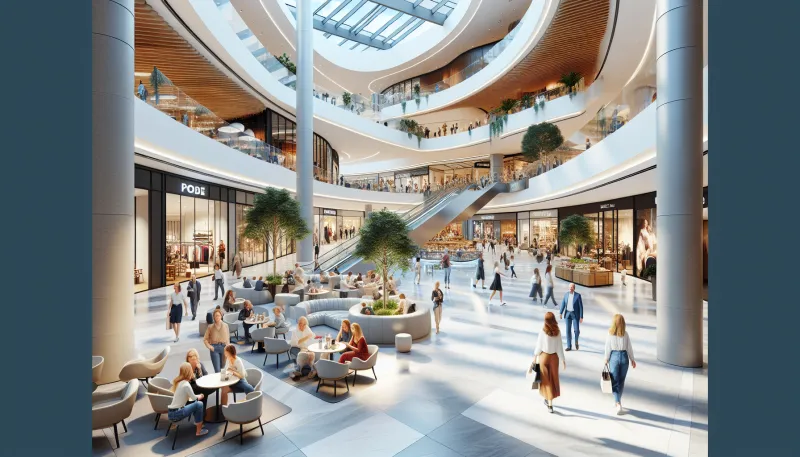
Retail reinvented: how malls are becoming lifestyle hubs
- The decline of traditional retail spaces
- Integration of mixed-use developments
- Experiential retail to engage visitors
- Elevating food and beverage offerings
- Wellness and fitness as core components
- Technology enhancing convenience and engagement
- Community events and cultural programming
- Sustainability initiatives shaping mall design
- The rise of personalized and curated experiences
The decline of traditional retail spaces
With the rise of e-commerce and changing consumer preferences, many traditional retail malls faced declining foot traffic and sales. Large anchor stores shuttered, and food courts and specialty shops struggled to attract visitors. This created an urgent need for malls to rethink their purpose beyond being mere shopping centers, prompting a paradigm shift in how these spaces operate.
Integration of mixed-use developments
Malls are increasingly incorporating mixed-use elements, blending retail with residential, office, and entertainment spaces. This multifaceted approach transforms malls into vibrant communities where people can live, work, and play. Mixed-use developments foster a constant flow of visitors throughout the day, creating synergies that benefit retailers, service providers, and residents alike.
Experiential retail to engage visitors
To entice shoppers back, malls have embraced experiential retail designed to create memorable and interactive experiences. This includes pop-up shops, virtual reality zones, art installations, and workshops. Such activities encourage visitors to spend more time and invite repeat visits by offering more than just products but also immersive experiences.
Elevating food and beverage offerings
Modern malls recognize the critical role of food and beverage options in driving foot traffic. Beyond traditional food courts, they offer gourmet restaurants, craft breweries, coffee bars, and food markets focusing on local and artisanal products. These curated dining experiences make malls appealing destinations for socializing and leisure, not just shopping.
Wellness and fitness as core components
Incorporating wellness and fitness facilities has emerged as a key strategy for malls aiming to foster holistic lifestyles. Yoga studios, gyms, spas, and health clinics integrated within malls provide convenient access to health-related services. This helps transform malls into daily destinations that support physical and mental well-being.
Technology enhancing convenience and engagement
Cutting-edge technologies are integral to the mall reinvention, improving customer convenience and engagement. Mobile apps offer personalized promotions, in-mall navigation, and seamless payment options. Interactive digital displays and augmented reality features enhance shopping with interactive product information and entertainment.
Community events and cultural programming
Malls have become gathering places by hosting community-focused events such as farmers' markets, live music, art exhibitions, and seasonal festivals. These programming efforts foster social connections and often highlight local culture, strengthening the mall's role as a community anchor and destination.
Sustainability initiatives shaping mall design
Many malls are adopting sustainable practices to meet growing environmental concerns among consumers. This includes green building designs, energy-efficient lighting, waste reduction programs, and promoting eco-friendly retailers. Sustainable features not only reduce operating costs but also enhance the mall's reputation and appeal to eco-conscious visitors.
The rise of personalized and curated experiences
Personalization is key in today's retail environment, and malls are responding with curated experiences tailored to diverse customer segments. Data analytics help deliver targeted events, product selections, and service offerings that resonate with individual preferences, creating deeper customer loyalty and a sense of belonging within the mall community.
Tommy is a property-passionate journalist who covers the forces shaping housing and the built environment. With a data-driven approach and a reporter’s curiosity, he writes on market cycles, urban development, PropTech, and policy—always connecting numbers to everyday lives. [Name]’s work blends clear analysis with on-the-ground reporting to help readers navigate trends, opportunities, and risks across residential and commercial real estate.

